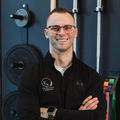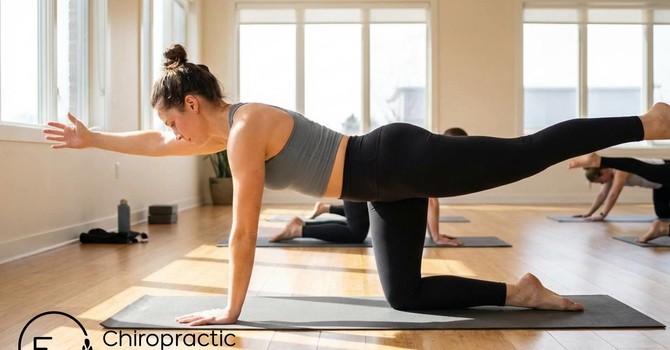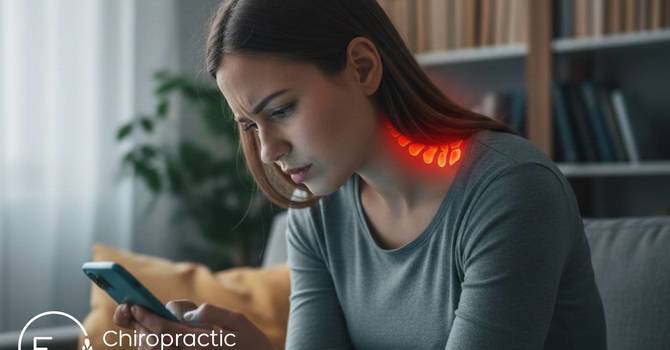
If you’re a runner, you’ve probably experienced it at some point: tight hips, stiff calves, aching knees, or lower back discomfort after a few miles. Maybe you chalk it up to getting older, running on pavement, or “just needing to stretch more.” But here’s the thing—poor flexibility and mobility aren’t just minor annoyances; they can actually sabotage your running form and increase your risk of injury.
At E3 Chiropractic + Wellness, we work with runners of all levels who want to not just run more—but run better. As a leading Saskatoon Chiropractor clinic, we know that small changes to your mobility can make a massive difference in how you move, feel, and perform.
Today, we’re diving into three simple stretches that can dramatically improve your running form, help you move more efficiently, and prevent those nagging injuries from creeping up.
Why Flexibility and Mobility Matter for Runners
Before we jump into the stretches, it’s important to understand why mobility is such a big deal for runners.
Running is a repetitive, high-impact activity. Every stride demands a coordinated effort between your ankles, knees, hips, and spine. If one area is tight or restricted, your body will find a workaround—but those compensations often lead to poor mechanics, overuse injuries, and pain.
Common mobility issues that affect running form include:
- Tight hip flexors pulling your pelvis into a forward tilt
- Stiff calves limiting ankle dorsiflexion (forward ankle bend)
- Restricted thoracic (mid-back) rotation affecting arm swing and balance
By improving flexibility in key areas, you allow your body to move through its natural range of motion with less strain, better alignment, and more efficiency.
The 3 Best Stretches for Better Running Form
Here are three of our favorite stretches at E3 Chiropractic + Wellness to target the most common mobility roadblocks for runners.
1. Hip Flexor Stretch (Lunge Stretch)
Why it matters:
Sitting for long periods shortens your hip flexors. Tight hip flexors pull the pelvis forward, causing an exaggerated arch in your lower back, which can throw off your running posture and make you prone to low back pain.
How to do it:
- Start in a lunge position with your right foot forward and your left knee on the ground.
- Gently push your hips forward until you feel a stretch in the front of your left hip.
- Keep your chest upright and avoid overarching your lower back.
- Hold for 30 seconds, then switch sides.
Pro Tip:
Squeeze your glutes on the back leg to deepen the stretch without overloading your spine.
2. Standing Calf Stretch
Why it matters:
If your calves are tight, your ankles can’t flex properly during your stride. Limited ankle mobility forces your knees and hips to compensate, which can cause inefficiencies and even shin splints or plantar fasciitis.
How to do it:
- Stand facing a wall.
- Place your hands on the wall at shoulder height.
- Step one foot back, keeping the heel flat and the toes pointed forward.
- Lean into the wall until you feel a stretch in the back leg’s calf.
- Hold for 30 seconds, then switch sides.
Pro Tip:
To target the deeper soleus muscle (important for running!), bend your back knee slightly while keeping the heel down.
3. Thoracic Spine Rotation Stretch
Why it matters:
Good upper-body rotation helps balance your running stride and reduces excessive twisting forces through your low back and hips. Many runners, especially desk workers, have stiff thoracic spines that limit healthy arm swing and contribute to core instability.
How to do it:
- Lie on your side with your knees bent at 90 degrees in front of you.
- Extend your arms straight out in front of you, palms together.
- Slowly lift your top arm and rotate it toward the floor behind you, trying to get your shoulder blade toward the ground while keeping your hips stacked.
- Hold the end position for 5–10 seconds, then return to start.
- Repeat 8–10 times per side.
Pro Tip:
Keep your knees glued together to make sure the rotation comes from your mid-back, not your lower back.
Why These Stretches Work
Each of these stretches targets a specific area that tends to get tight from both running and modern daily habits (like sitting at a desk). By addressing these restrictions:
- Your pelvis stays more neutral, improving your core stability.
- Your ankle moves freely, allowing better stride efficiency.
- Your upper body rotates naturally, enhancing balance and rhythm.
The result? Better running economy, fewer injuries, and more enjoyable miles.
When to Stretch for Best Results
Timing matters!!!!
Before running: Focus on dynamic mobility drills to wake up your muscles and joints. (Think light lunges, ankle circles, and arm swings.)
After running: Perform deeper, static stretches like the ones listed above when your body is warm to help with recovery and long-term mobility gains.
Consistency is key. A few minutes of focused stretching a day can have a profound impact over time.
How E3 Chiropractic + Wellness Can Help Runners in Saskatoon
While stretching is crucial, sometimes persistent mobility issues stem from deeper problems like joint restrictions, muscle imbalances, or poor movement patterns. That’s where professional care comes in.
At E3 Chiropractic + Wellness, we specialize in helping runners and active individuals:
- Identify the root cause of mobility restrictions or recurring pain
- Perform hands-on chiropractic adjustments to restore joint motion
- Design customized corrective exercise programs
- Provide soft tissue therapy to address muscle tightness and adhesions
- Educate on running form and injury prevention strategies
As a trusted Saskatoon Chiropractor, we don’t just treat symptoms—we create solutions that keep you strong, healthy, and performing at your best.
Don’t Let Stiffness Hold You Back
Running should feel good. It should make you feel strong, free, and energized—not stiff, sore, or frustrated. By incorporating these three simple stretches into your routine—and getting professional guidance when needed—you can take huge strides (pun intended) toward better running form and fewer injuries.
If you're serious about moving better, feeling stronger, and running pain-free, it’s time to take action.
Simple click HERE to book your assessment with E3 Chiropractic + Wellness today and see how much better your body can feel when everything moves the way it’s supposed to.





